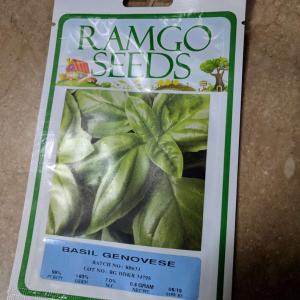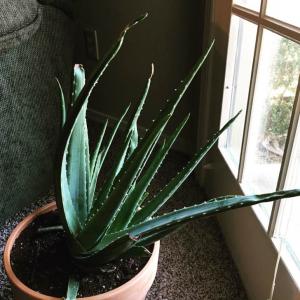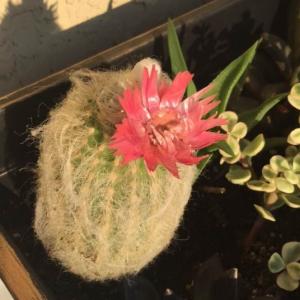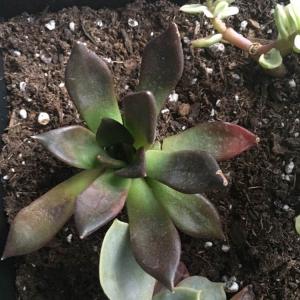文章
Dummer. ゛☀
2017年09月27日

Whether displaying bright orange or sunny yellow flowers, Calendula (also called Pot Marigold) is one of the most essential parts of your garden medicine chest. The aromatic heads of these spring flowers can be collected and made into oils and salves to help heal skin injuries of all kinds. Make sure you grow only Calendula officinalis and not just any of the many marigolds or ornamental varieties that are available. Read on to learn the specifics for growing and caring for these delicate and beneficial flowers.
Growing
Calendula can grow to almost 2 feet (60 cm) tall, and the flowers tend to open with sunny, dry weather and close in cold or moist conditions. They enjoy full sun (or even partial shade in hot summer regions) and average soil, and have moderate water needs. If flower production dwindles, you can cut back the plants to increase new flower production. Calendula will self-sow yearly in many gardens and don’t mind crowding. Direct-sow the seeds in early spring or late fall, as they can withstand some frost.
Harvesting
Collect the flower heads on hot, sunny days for the highest resin content, and pick them regularly to prevent the plants from putting their energy into seed production. Once that happens, the rest of the flowers will be smaller. Choose flowers that are just opening in the morning before noon, and dry Calendula quickly after you harvest it. Check the center of the flower for dryness because molding in storage is a problem. Watch for reabsorption of moisture and keep it in complete darkness.
Healing Properties
Use the entire flower head, not just the petals, in preparations for healing cuts, scrapes, burns, diaper rash, sores, ulcers, varicose veins, chapped skin and lips, and insect bites. Salves, oils, creams, and other preparations can be found in drugstores and natural food stores alike. Science shows that extracts of the flower heads have anti-inflammatory and antibacterial effects. And herbalists have long recommended tea infusions of Calendula to help heal ulcers in the digestive tract, soothe gallbladder inflammation, and treat enlarged, sore lymph glands.
Preparations
Use the freshly dried flower heads to make creams, salves, liniments, teas, tinctures, and oils, or add the flower heads directly to your bath to soothe irritated skin. For internal conditions, take 1 to 3 dropperfuls of tincture in a little water several times daily (though be sure to check with your healthcare professional first).
Safety
As with other members of the Daisy family, some people are sensitive to Calendula because of the sesquiterpene compounds that the plants contain. If you tend to have allergic skin reactions or are sensitive to certain foods, start with a low dose of this herb and work up to a full dose if you don’t experience any reaction.

Growing
Calendula can grow to almost 2 feet (60 cm) tall, and the flowers tend to open with sunny, dry weather and close in cold or moist conditions. They enjoy full sun (or even partial shade in hot summer regions) and average soil, and have moderate water needs. If flower production dwindles, you can cut back the plants to increase new flower production. Calendula will self-sow yearly in many gardens and don’t mind crowding. Direct-sow the seeds in early spring or late fall, as they can withstand some frost.

Harvesting
Collect the flower heads on hot, sunny days for the highest resin content, and pick them regularly to prevent the plants from putting their energy into seed production. Once that happens, the rest of the flowers will be smaller. Choose flowers that are just opening in the morning before noon, and dry Calendula quickly after you harvest it. Check the center of the flower for dryness because molding in storage is a problem. Watch for reabsorption of moisture and keep it in complete darkness.

Healing Properties
Use the entire flower head, not just the petals, in preparations for healing cuts, scrapes, burns, diaper rash, sores, ulcers, varicose veins, chapped skin and lips, and insect bites. Salves, oils, creams, and other preparations can be found in drugstores and natural food stores alike. Science shows that extracts of the flower heads have anti-inflammatory and antibacterial effects. And herbalists have long recommended tea infusions of Calendula to help heal ulcers in the digestive tract, soothe gallbladder inflammation, and treat enlarged, sore lymph glands.

Preparations
Use the freshly dried flower heads to make creams, salves, liniments, teas, tinctures, and oils, or add the flower heads directly to your bath to soothe irritated skin. For internal conditions, take 1 to 3 dropperfuls of tincture in a little water several times daily (though be sure to check with your healthcare professional first).

Safety
As with other members of the Daisy family, some people are sensitive to Calendula because of the sesquiterpene compounds that the plants contain. If you tend to have allergic skin reactions or are sensitive to certain foods, start with a low dose of this herb and work up to a full dose if you don’t experience any reaction.
0
1
文章
Dummer. ゛☀
2017年09月27日

Every flower gardener should know the pleasure of growing Clematis. If you already have one in your garden, you’re probably scheming about how to squeeze in another! New to Clematis? Read on and discover how easy it is to be successful with the “queen of climbers”.
Selecting
Clematis have become a hugely popular perennial, and today, the average local garden center offers dozens of different choices. When selecting a Clematis for your garden, you’ll want to think about a couple things, which include its mature height, flower form and color.
If you have room for a vigorous 10- or 20-foot (3 or 6 m) Clematis vine, there are many wonderful cultivars that will fit the bill. There are also more compact varieties that are perfectly happy growing in a small garden or even in a pot on the patio.
The standard Clematis flower form is a large blossom with 6 or 7 petals, measuring 5 to 6 inches (12.5 to 15 cm) across. There are also cultivars with smaller blossoms, double blossoms, and lovely bell-like flowers. Colors range from white to wine red, lavender to deep purple, and there are even a few yellow ones.
It can take several years for a Clematis vine to mature and begin flowering vigorously. To shorten the wait and help ensure your success, it’s best to purchase a plant that’s at least 2 years old. Look for a container-grown plant in a quart or gallon-size pot. If you’re shopping for your Clematis at a garden center or nursery, select a robust plant that’s showing vigorous growth, rather than a weak plant with a beautiful picture.
Where to Plant
Hopefully you have a planting location in mind before you bring home your new Clematis . Ideally it’s a sunny spot.
Clematis prefer moist, well-drained soil that’s neutral to slightly alkaline in pH. If your soil tends to be acidic, you should sweeten it periodically with limestone or a little wood ash. Dig a good hole for your new Clematis, working in lots of compost and some granular organic fertilizer.
Be very gentle when settling the plant into its new home; the roots, crown and emerging vines of Clematis can be easily broken. Position the plant slightly deeper than it was growing in the pot, so the first set of true leaves is just under the soil surface. Water weekly for the first season, to help the plant get established. If you can get your Clematis through its first year, chances are good that it will continue to thrive. Mulching around the base of the plant will help conserve moisture, but keep the mulch several inches away from the crown, where the vines emerge from the soil.
Clematis are happiest with cool shade at their roots and warm sun on their foliage. Mulching around the roots will help keep the soil cool, as will the foliage of a low-growing perennial.
How to Support
Like other climbing plants, the growing end of a Clematis vine is searching for something to grab onto, and if it can’t find anything, it will stop growing. Make sure you provide it with something to climb on from day one.
A Clematis vine does not climb by twining around something, as a Pole Bean or a Morning Glory does. It climbs by wrapping its leaf stems around something. Because these leaf stems are not very long, anything that’s more than about 0.5 inch (1.3 cm) in diameter is too wide for the leaf stem to twist around. The easiest things for a Clematis to grab onto, are twine, fishing line, wire, thin branches, wooden dowels or steel rods. The more grabbing opportunities you offer, the better, so even if you have a nice trellis, consider adding some twine “helper” lines, or covering your trellis with a grid of trellis netting.
Depending on the vigor of the plant and the type of trellis you have, you’ll probably need to do some “trussing” during the season to help support the vines and keep them attached to the trellis. Both fishing line and twine work well for this job.
Pruning and Care
Clematis vary in their need for pruning. Some types flower on last year’s vines, so you want to avoid cutting them to the ground in the spring. Others flower on current-year vines, so they don’t mind being cut to the ground each year. Rather than driving yourself crazy trying to keep track of the ideal pruning technique for each cultivar, try this common-sense approach: leave the prior year’s growth in place until mid-spring. Begin pruning only when you can see which vines are dead and which ones are starting to leaf out.
A happy clematis plant puts out an amazing amount of flowers and foliage. Feed your plants well to keep them healthy and vigorous. In early spring, surround the plant with a shovelful of compost and a handful of granular organic fertilizer. Feed again, once or twice during the growing season, with a water-soluble organic fertilizer.

Selecting
Clematis have become a hugely popular perennial, and today, the average local garden center offers dozens of different choices. When selecting a Clematis for your garden, you’ll want to think about a couple things, which include its mature height, flower form and color.
If you have room for a vigorous 10- or 20-foot (3 or 6 m) Clematis vine, there are many wonderful cultivars that will fit the bill. There are also more compact varieties that are perfectly happy growing in a small garden or even in a pot on the patio.

The standard Clematis flower form is a large blossom with 6 or 7 petals, measuring 5 to 6 inches (12.5 to 15 cm) across. There are also cultivars with smaller blossoms, double blossoms, and lovely bell-like flowers. Colors range from white to wine red, lavender to deep purple, and there are even a few yellow ones.
It can take several years for a Clematis vine to mature and begin flowering vigorously. To shorten the wait and help ensure your success, it’s best to purchase a plant that’s at least 2 years old. Look for a container-grown plant in a quart or gallon-size pot. If you’re shopping for your Clematis at a garden center or nursery, select a robust plant that’s showing vigorous growth, rather than a weak plant with a beautiful picture.

Where to Plant
Hopefully you have a planting location in mind before you bring home your new Clematis . Ideally it’s a sunny spot.
Clematis prefer moist, well-drained soil that’s neutral to slightly alkaline in pH. If your soil tends to be acidic, you should sweeten it periodically with limestone or a little wood ash. Dig a good hole for your new Clematis, working in lots of compost and some granular organic fertilizer.

Be very gentle when settling the plant into its new home; the roots, crown and emerging vines of Clematis can be easily broken. Position the plant slightly deeper than it was growing in the pot, so the first set of true leaves is just under the soil surface. Water weekly for the first season, to help the plant get established. If you can get your Clematis through its first year, chances are good that it will continue to thrive. Mulching around the base of the plant will help conserve moisture, but keep the mulch several inches away from the crown, where the vines emerge from the soil.
Clematis are happiest with cool shade at their roots and warm sun on their foliage. Mulching around the roots will help keep the soil cool, as will the foliage of a low-growing perennial.

How to Support
Like other climbing plants, the growing end of a Clematis vine is searching for something to grab onto, and if it can’t find anything, it will stop growing. Make sure you provide it with something to climb on from day one.
A Clematis vine does not climb by twining around something, as a Pole Bean or a Morning Glory does. It climbs by wrapping its leaf stems around something. Because these leaf stems are not very long, anything that’s more than about 0.5 inch (1.3 cm) in diameter is too wide for the leaf stem to twist around. The easiest things for a Clematis to grab onto, are twine, fishing line, wire, thin branches, wooden dowels or steel rods. The more grabbing opportunities you offer, the better, so even if you have a nice trellis, consider adding some twine “helper” lines, or covering your trellis with a grid of trellis netting.

Depending on the vigor of the plant and the type of trellis you have, you’ll probably need to do some “trussing” during the season to help support the vines and keep them attached to the trellis. Both fishing line and twine work well for this job.
Pruning and Care
Clematis vary in their need for pruning. Some types flower on last year’s vines, so you want to avoid cutting them to the ground in the spring. Others flower on current-year vines, so they don’t mind being cut to the ground each year. Rather than driving yourself crazy trying to keep track of the ideal pruning technique for each cultivar, try this common-sense approach: leave the prior year’s growth in place until mid-spring. Begin pruning only when you can see which vines are dead and which ones are starting to leaf out.

A happy clematis plant puts out an amazing amount of flowers and foliage. Feed your plants well to keep them healthy and vigorous. In early spring, surround the plant with a shovelful of compost and a handful of granular organic fertilizer. Feed again, once or twice during the growing season, with a water-soluble organic fertilizer.
1
1
文章
Dummer. ゛☀
2017年09月27日

Wisteria is the quintessential climber for the English cottage garden. A well-grown Wisteria is an absolute joy in mid-late spring when the beautiful, scented pendants of flowers drape from the branches in a breathtaking display. But often gardeners find these climbing plants a little daunting. The idea of all that pruning and training just feels far too complicated. It’s a shame because it’s not as tricky as you might think – in fact Wisteria is actually very easy to grow. With correct care these long-lived twining climbers will reward you with many years of pleasure in your garden.
Growing Conditions and General Care
The most important factor to consider when growing Wisteria is location. Wisteria is a twining vine that requires sturdy support and regular pruning to keep it under control. Open areas surrounded by lawn that can be easily mowed are ideal for growing Wisteria.
Wisteria doesn’t fair well in cold so make sure it receives plenty of sunlight.
This vine requires deep, rich soil that is somewhat moist but will tolerate many soil conditions.
Once planted, pruning is about the only important requirement for Wisteria vine care. Since this vine is an aggressive grower, there’s no need for fertilizing and being drought tolerant, Wisteria requires little watering.
Pruning and Training
While Wisteria is great for covering an arbor or pergola, training Wisteria vines makes it easier to control. Keep in mind, however, when training Wisteria vines the variety may exhibit different twining characteristics. For example, Chinese wisteria (Wisteria sinensis) twines counterclockwise while the Japanese variety (Wisteria floribunda) is the opposite, twining clockwise.
When training Wisteria vines, select an upright stem and attach it to the chosen support. Remove any side shoots and continue to train the main vine upwards. New side branches can be trained as needed to fill in spaces of the support structure by attaching them where desired. For best results, keep these side branches spaced about 18 inches (45 cm) apart. Once the Wisteria has reached the desired height, pinch off or cut the main vine tip to stunt its growth.
Even trained Wisteria vines require regular pruning; otherwise, Wisteria will quickly take over everything in its path. Knowing how and when to prune Wisteria is important. While regular pruning of new shoots throughout its growing season helps keep the vine manageable, Wisteria requires a heavy pruning in late fall or winter as well. Remove any dead wood or crowded branches and cut back the side branches to about a foot (30 cm) or so from the main trunk. Also remove any suckers from its base.
Propagation
Learning how to propagate Wisteria vines is easy; however, doing so by way of seed is not a good idea. If choosing to propagate from seed, soak them overnight and plant. The seeds should sprout within a few weeks but keep in mind that blooming may not occur for 10-15 years, if ever.
The best way to propagate Wisteria is through cuttings taken in summer or by layering branches. Either method will still take about 3 to 4 years for blooming. When layering branches, choose a flexible branch and bend it to the ground, placing a few inches into the soil (with leaf node included). Weight it down to secure in place and allow this to overwinter. By spring it should have enough roots for planting.

Growing Conditions and General Care
The most important factor to consider when growing Wisteria is location. Wisteria is a twining vine that requires sturdy support and regular pruning to keep it under control. Open areas surrounded by lawn that can be easily mowed are ideal for growing Wisteria.
Wisteria doesn’t fair well in cold so make sure it receives plenty of sunlight.
This vine requires deep, rich soil that is somewhat moist but will tolerate many soil conditions.
Once planted, pruning is about the only important requirement for Wisteria vine care. Since this vine is an aggressive grower, there’s no need for fertilizing and being drought tolerant, Wisteria requires little watering.

Pruning and Training
While Wisteria is great for covering an arbor or pergola, training Wisteria vines makes it easier to control. Keep in mind, however, when training Wisteria vines the variety may exhibit different twining characteristics. For example, Chinese wisteria (Wisteria sinensis) twines counterclockwise while the Japanese variety (Wisteria floribunda) is the opposite, twining clockwise.
When training Wisteria vines, select an upright stem and attach it to the chosen support. Remove any side shoots and continue to train the main vine upwards. New side branches can be trained as needed to fill in spaces of the support structure by attaching them where desired. For best results, keep these side branches spaced about 18 inches (45 cm) apart. Once the Wisteria has reached the desired height, pinch off or cut the main vine tip to stunt its growth.

Even trained Wisteria vines require regular pruning; otherwise, Wisteria will quickly take over everything in its path. Knowing how and when to prune Wisteria is important. While regular pruning of new shoots throughout its growing season helps keep the vine manageable, Wisteria requires a heavy pruning in late fall or winter as well. Remove any dead wood or crowded branches and cut back the side branches to about a foot (30 cm) or so from the main trunk. Also remove any suckers from its base.

Propagation
Learning how to propagate Wisteria vines is easy; however, doing so by way of seed is not a good idea. If choosing to propagate from seed, soak them overnight and plant. The seeds should sprout within a few weeks but keep in mind that blooming may not occur for 10-15 years, if ever.

The best way to propagate Wisteria is through cuttings taken in summer or by layering branches. Either method will still take about 3 to 4 years for blooming. When layering branches, choose a flexible branch and bend it to the ground, placing a few inches into the soil (with leaf node included). Weight it down to secure in place and allow this to overwinter. By spring it should have enough roots for planting.
0
1
文章
Dummer. ゛☀
2017年09月27日

Roses (genus Rosa) are some of the most popular and beautiful flowering shrubs grown, but starting a rose garden may seem daunting to new gardeners. However, growing roses for beginners doesn’t have to be a stressful endeavor. In fact, with proper planting and care, nearly anyone can become a successful rose gardener.
Growing Conditions
When growing roses, it’s important to choose a site receiving at least 6 hours of sun each day. Rose bushes must also be located in well-drained, fertile soil. Plant dormant roses in early spring (or fall). Potted plants can be planted any time between spring and fall, but preferably spring.
If you’re planting bare root roses, presoak them in water for at least 24 hours prior to placing them in the ground.
Both bare root and potted rose bushes need to be planted about 2 feet (60 cm) deep, with the hole large enough to accommodate the roots. Backfill the hole with soil, adding some well-rotted manure in with it and water thoroughly. Then mound up additional soil around the base of the plant. Note that this is not necessary for actively growing roses.
General Care
Caring for rose bushes is important to their overall health and vigor, especially when it comes to watering. Roses require at least an inch (2.5 cm) of water weekly throughout their growing season, beginning in spring or following spring planting. While overhead watering is suitable before the onset of new growth, it is often better to water these plants at the soil line using soaker hoses or similar means. Rose bushes are very susceptible to fungal diseases, such as black spot and powdery mildew, especially when their foliage is kept too wet.
Fertilizer for roses should also be applied in spring, following the label instructions carefully. However, with the addition of well-rotted manure each spring, this is usually adequate. Mulching your rose bush will help retain moisture and may also offer some winter protection.
Pruning is another aspect to consider when caring for rose bushes. This often takes place once leaf buds appear in spring. Make cuts about 1/4 inch (8 mm) above the bud eyes and prune out any twiggy or unhealthy branches.
Starting a rose garden and knowing how to take care of roses shouldn’t be intimidating. In fact, it’s easier than you might think. Just give them what they need and before you know it, you’ll be rewarded with beautiful blooms.

Growing Conditions
When growing roses, it’s important to choose a site receiving at least 6 hours of sun each day. Rose bushes must also be located in well-drained, fertile soil. Plant dormant roses in early spring (or fall). Potted plants can be planted any time between spring and fall, but preferably spring.
If you’re planting bare root roses, presoak them in water for at least 24 hours prior to placing them in the ground.

Both bare root and potted rose bushes need to be planted about 2 feet (60 cm) deep, with the hole large enough to accommodate the roots. Backfill the hole with soil, adding some well-rotted manure in with it and water thoroughly. Then mound up additional soil around the base of the plant. Note that this is not necessary for actively growing roses.

General Care
Caring for rose bushes is important to their overall health and vigor, especially when it comes to watering. Roses require at least an inch (2.5 cm) of water weekly throughout their growing season, beginning in spring or following spring planting. While overhead watering is suitable before the onset of new growth, it is often better to water these plants at the soil line using soaker hoses or similar means. Rose bushes are very susceptible to fungal diseases, such as black spot and powdery mildew, especially when their foliage is kept too wet.

Fertilizer for roses should also be applied in spring, following the label instructions carefully. However, with the addition of well-rotted manure each spring, this is usually adequate. Mulching your rose bush will help retain moisture and may also offer some winter protection.
Pruning is another aspect to consider when caring for rose bushes. This often takes place once leaf buds appear in spring. Make cuts about 1/4 inch (8 mm) above the bud eyes and prune out any twiggy or unhealthy branches.

Starting a rose garden and knowing how to take care of roses shouldn’t be intimidating. In fact, it’s easier than you might think. Just give them what they need and before you know it, you’ll be rewarded with beautiful blooms.
0
1
文章
Dummer. ゛☀
2017年09月27日

The cottage garden is a distinct style that uses informal design, traditional materials, dense plantings, and a mixture of ornamental and edible plants. English in origin, it depends on grace and charm rather than grandeur and formal structure. Homely and functional gardens connected to working-class cottages go back centuries, but their stylized reinvention occurred in 1870s England, as a reaction to the more structured, rigorously maintained estate gardens with their formal designs and mass plantings of greenhouse annuals.
The earliest cottage gardens were more practical than today’s, with emphasis on vegetables and herbs, fruit trees, perhaps a beehive, and even livestock. Flowers, used to fill spaces, gradually became more dominant. The traditional cottage garden was usually enclosed, perhaps with a rose-bowered gateway. Flowers common to early cottage gardens included traditional florists’ flowers such as primroses and violets, along with flowers with household use such as Calendula and various herbs. Others were the richly scented old-fashioned roses that bloomed once a year, and simple flowers like daisies. In time, cottage-garden sections were added to some large estate gardens as well.
Modern cottage gardens include countless regional and personal variations and embrace plant materials, such as ornamental grasses or native plants not seen in the rural gardens of cottagers. Traditional roses, with their full fragrance and lush foliage, continue to be a cottage-garden mainstay — along with modern disease-resistant varieties that retain traditional attributes. Informal climbing plants, whether traditional or modern hybrids, are also common, as are the self-sowing annuals and freely spreading perennials favored in traditional cottagers’ gardens.

The earliest cottage gardens were more practical than today’s, with emphasis on vegetables and herbs, fruit trees, perhaps a beehive, and even livestock. Flowers, used to fill spaces, gradually became more dominant. The traditional cottage garden was usually enclosed, perhaps with a rose-bowered gateway. Flowers common to early cottage gardens included traditional florists’ flowers such as primroses and violets, along with flowers with household use such as Calendula and various herbs. Others were the richly scented old-fashioned roses that bloomed once a year, and simple flowers like daisies. In time, cottage-garden sections were added to some large estate gardens as well.

Modern cottage gardens include countless regional and personal variations and embrace plant materials, such as ornamental grasses or native plants not seen in the rural gardens of cottagers. Traditional roses, with their full fragrance and lush foliage, continue to be a cottage-garden mainstay — along with modern disease-resistant varieties that retain traditional attributes. Informal climbing plants, whether traditional or modern hybrids, are also common, as are the self-sowing annuals and freely spreading perennials favored in traditional cottagers’ gardens.

0
0
文章
Dummer. ゛☀
2017年09月27日

Did you know that you can grow orchids in your garden, in the ground? Most people think of orchids as showy, greenhouse beauties, but those plants represent only one type of orchids. Among the Orchid family, there are over 200 species that flourish in the soil. These plants are classified as terrestrial orchids and grow wild in subtropical and tropical areas of America.
Considered woodland plants, terrestrial orchids share some characteristics with their greenhouse counterparts. These plants come in many shapes and size, produce blossoms in a rainbow of colors, and are famous for filling the night air with wonderful aromas. Unlike their tropical cousins, however, these woodland flowers do not produce aerial roots or stems that climb trees and bushes. They prefer to keep their roots firmly planted in the earth.
Terrestrial orchids don’t need a lot of fertilizer, either. As a matter of fact, most of these ground-loving plants can’t handle a lot of fertilizer. Usually all that’s needed to feed these flowers is leafy compost at planting and later as the plants mature. If your soil is poor in nutrients and you must fertilize, use a very weak solution. Take the food you would normally give flowers and dilute it to one-quarter strength.
One difference between terrestrial orchids and other orchids that often surprises people is their ability to tolerate cold temperatures. Many of these species survive well in freezing temperatures, and some actually require sub-freezing conditions in order to bloom. Like tulips and other bulb plants, these orchids go dormant through the cold weather months and grow and bloom again when spring arrives.
Terrestrial orchids can be categorized into two general groups: individual growers and clumps/tuft growers.
Within the individual growers (also called solitary) there are two distinct growth habits. One group produces both their leaves and their flowers from one stem, which sprouts from an underground tuber or corm. This single stem is leafy and produces an inflorescence at its end. After the blossom is completely open and seeding is complete, these orchids drop their leaves, or become deciduous. The tubers or corms experience an annual dormant period, then continue their life cycle.
The other group of solitary growing terrestrial orchids produces a separate leaf stem and a separate flower stem. Each of these stems sprouts from a distinct bud on the rhizome. An example of this type of growth can be growth can be found in flowers among the Nervilia, Eulophia and Pachystoma genera.
Terrestrial orchids that grow erect are usually evergreen and keep their leaves for a year or more. Leafy pseudobulbs provide new growth, usually from the base, as seen in Phaius, Liparis and Acanthephippium genera.Plants among the genera of Macodes and Zeuxine provide beautiful examples of creeping Terrestrial orchids. The rhizomes of these plants are usually fleshy with long internodes. Axillary buds grow below the apex of the rhizomes and produce upright leaf and flower spikes. After flowering ends, and sometimes after the plant loses its leaves, new growth begins. The original upright spike falls and is absorbed by the rhizome.

Considered woodland plants, terrestrial orchids share some characteristics with their greenhouse counterparts. These plants come in many shapes and size, produce blossoms in a rainbow of colors, and are famous for filling the night air with wonderful aromas. Unlike their tropical cousins, however, these woodland flowers do not produce aerial roots or stems that climb trees and bushes. They prefer to keep their roots firmly planted in the earth.

Terrestrial orchids don’t need a lot of fertilizer, either. As a matter of fact, most of these ground-loving plants can’t handle a lot of fertilizer. Usually all that’s needed to feed these flowers is leafy compost at planting and later as the plants mature. If your soil is poor in nutrients and you must fertilize, use a very weak solution. Take the food you would normally give flowers and dilute it to one-quarter strength.

One difference between terrestrial orchids and other orchids that often surprises people is their ability to tolerate cold temperatures. Many of these species survive well in freezing temperatures, and some actually require sub-freezing conditions in order to bloom. Like tulips and other bulb plants, these orchids go dormant through the cold weather months and grow and bloom again when spring arrives.
Terrestrial orchids can be categorized into two general groups: individual growers and clumps/tuft growers.

Within the individual growers (also called solitary) there are two distinct growth habits. One group produces both their leaves and their flowers from one stem, which sprouts from an underground tuber or corm. This single stem is leafy and produces an inflorescence at its end. After the blossom is completely open and seeding is complete, these orchids drop their leaves, or become deciduous. The tubers or corms experience an annual dormant period, then continue their life cycle.

The other group of solitary growing terrestrial orchids produces a separate leaf stem and a separate flower stem. Each of these stems sprouts from a distinct bud on the rhizome. An example of this type of growth can be growth can be found in flowers among the Nervilia, Eulophia and Pachystoma genera.
Terrestrial orchids that grow erect are usually evergreen and keep their leaves for a year or more. Leafy pseudobulbs provide new growth, usually from the base, as seen in Phaius, Liparis and Acanthephippium genera.Plants among the genera of Macodes and Zeuxine provide beautiful examples of creeping Terrestrial orchids. The rhizomes of these plants are usually fleshy with long internodes. Axillary buds grow below the apex of the rhizomes and produce upright leaf and flower spikes. After flowering ends, and sometimes after the plant loses its leaves, new growth begins. The original upright spike falls and is absorbed by the rhizome.
1
0
















